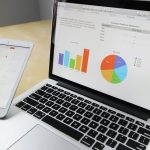When you're tackling spreadsheets, the size of your monitor can significantly impact your efficiency and comfort. A well-chosen display can enhance your ability to manage data without straining your eyes. But with so many options, how do you decide what's best for your needs? Let's explore the factors that can guide your choice and help you find the perfect fit for your workspace.
Table of Contents
Key Takeaways
- For basic tasks, a 24-inch monitor suffices, but larger sizes are preferable for complex spreadsheet work.
- A 27-inch monitor is ideal for multitasking and managing detailed data effectively.
- Ensure the monitor fits your workspace and allows for a comfortable viewing distance to reduce strain.
- Larger monitors (32 inches) assist in side-by-side comparisons, improving overall productivity and decision-making.
- Look for high resolution and adjustable stands to enhance visibility and ergonomics during extended use.
Understanding Your Workspace Needs
How do you envision your ideal workspace? Picture a setup that enhances your productivity and comfort.
Consider the layout of your desk, the placement of your monitor, and the overall environment. You'll want a space that minimizes distractions and maximizes focus.
Think about the amount of natural light and how it impacts your comfort while working on spreadsheets.
Are you someone who requires room for multiple documents or applications? If so, you'll need ample desk space.
Also, don't forget about ergonomics; a comfortable chair and proper monitor height can make a significant difference in your well-being.
Tailoring your workspace to fit your specific needs will boost your efficiency and make your time spent on spreadsheets more enjoyable.
Factors to Consider When Selecting Monitor Size
When selecting a monitor size for your spreadsheet work, you'll want to consider a few key factors that can significantly impact your efficiency.
First, think about your workspace—how much room do you have? A larger monitor can enhance visibility but mightn't fit comfortably in a smaller area.
Next, consider your viewing distance; sitting too close to a large screen can cause strain.
Also, evaluate the complexity of your spreadsheets—if you often work with multiple sheets or large datasets, a bigger monitor can help you view more data simultaneously.
Finally, take your budget into account; while larger monitors can be more expensive, investing in the right size can ultimately boost your productivity and comfort during long working hours.
Recommended Monitor Sizes for Different Tasks
For spreadsheet work, monitor sizes typically range from 24 to 32 inches, depending on the specific tasks you'll be handling.
If you're focused on basic data entry or simple calculations, a 24-inch monitor should suffice. However, if you're dealing with more complex spreadsheets, multitasking, or extensive data analysis, consider opting for a 27-inch or larger monitor.
This size offers a more comfortable viewing experience, allowing you to see multiple cells and charts without straining. For tasks that require side-by-side comparisons or utilizing multiple applications, a 32-inch monitor can be particularly beneficial.
Ultimately, choose a size that balances your workspace, comfort, and needs to enhance your efficiency while working with spreadsheets.
Benefits of Larger Monitors for Spreadsheet Work
A larger monitor can significantly enhance your spreadsheet work by providing improved visibility and organization. You'll have more screen real estate to view multiple sheets side by side, reducing the need to toggle back and forth. This setup helps you spot trends and discrepancies faster.
Here's a quick comparison of benefits:
| Benefit | Description |
|---|---|
| Improved Visibility | Larger text and more data at once |
| Enhanced Productivity | Streamlined workflow with fewer clicks |
| Reduced Eye Strain | More comfortable viewing experience |
With a larger monitor, you can easily manage complex data sets, allowing for better analysis and decision-making. So, if you're serious about your spreadsheet tasks, consider upgrading your monitor size!
Additional Features to Enhance Your Monitor Experience
Upgrading to a larger monitor can set the stage for an even better spreadsheet experience.
To further enhance your setup, consider these additional features:
- High Resolution: A monitor with at least 1080p resolution ensures crisp text and clear data visualization, making it easier to spot trends at a glance.
- Adjustable Stand: An ergonomic, adjustable stand allows you to customize the monitor's height and angle, reducing strain during long hours of work.
- Blue Light Filter: A built-in blue light filter helps minimize eye fatigue, so you can work comfortably for extended periods without discomfort.
These features not only improve your productivity but also contribute to a more enjoyable and efficient workflow.
Frequently Asked Questions
How Does Monitor Resolution Affect Spreadsheet Visibility?
Monitor resolution directly impacts how clearly you see details. Higher resolution enhances text sharpness and allows you to fit more data on-screen without losing clarity, making it easier to analyze and interact with your spreadsheets effectively.
Can I Use Multiple Smaller Monitors Instead of One Large Monitor?
Yes, you can definitely use multiple smaller monitors instead of one large monitor. This setup allows for more flexible arrangements, letting you spread out your work, but it might require some adjustment to your workflow.
What Aspect Ratio Is Best for Spreadsheet Work?
For spreadsheet work, a 16:9 aspect ratio is ideal. It offers ample horizontal space for multiple columns, making data easier to read. You'll find it enhances your productivity and helps you manage information efficiently.
Are Curved Monitors Beneficial for Spreadsheet Tasks?
Curved monitors can enhance your spreadsheet tasks by providing a more immersive viewing experience. They reduce glare and improve focus, making it easier for you to track data across multiple columns and rows efficiently.
How Do Different Brands Compare in Monitor Quality for Spreadsheets?
When comparing monitor brands, look for color accuracy, resolution, and refresh rates. Brands like Dell and LG often excel in quality, but it's wise to read reviews and compare features to find what suits you best.




